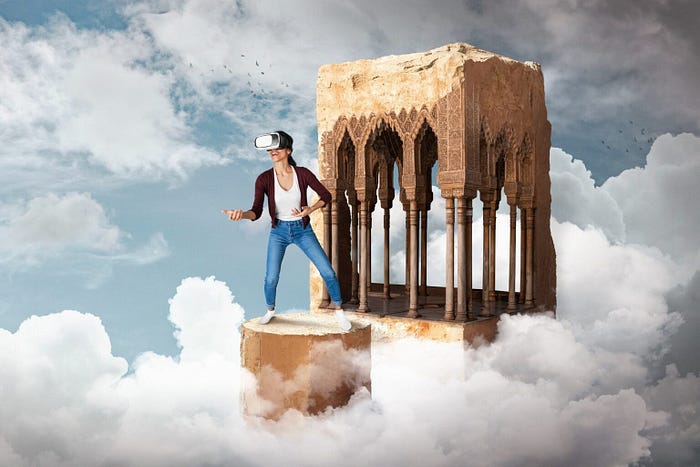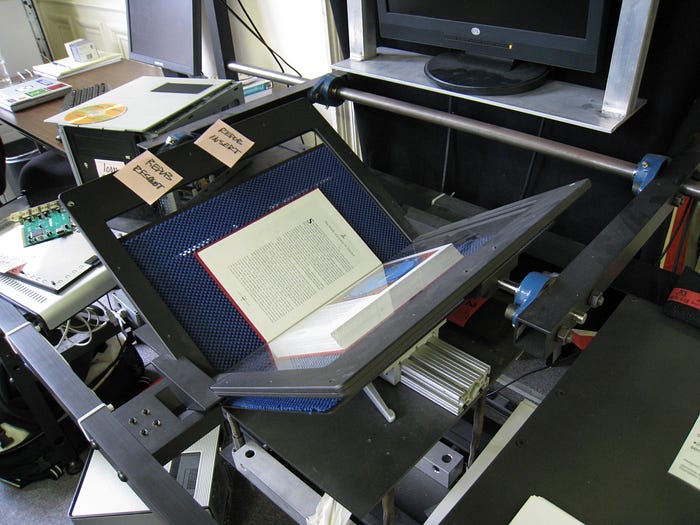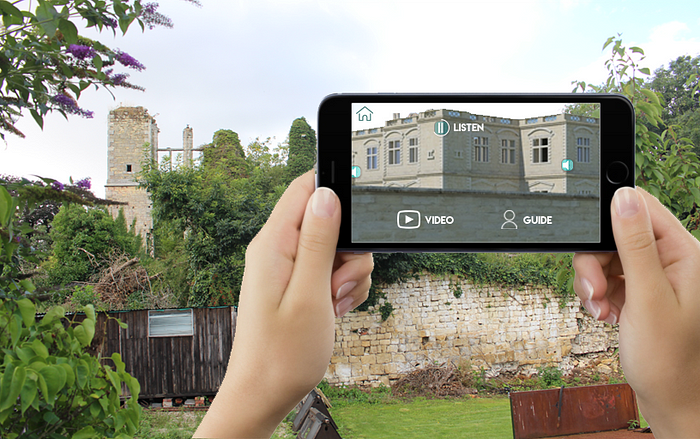Computer Vision for Cultural Heritage Preservation: Unlocking the Past with Advanced Imaging Technology

Preserving our cultural legacy is critical because it allows us to remain in touch with our past, learn our roots, and appreciate humanity’s rich history. However, many cultural relics are fragile, susceptible to degradation, or threatened by destruction. This is when computer vision’s power comes into play. Computer vision is transforming the field of cultural heritage conservation by utilizing modern image technology.
This piece will examine how computer vision has been employed to protect and restore cultural heritage artifacts. We will focus on three significant areas: image-based 3D modeling, historical document digitalization, and virtual heritage experiences. These ground-breaking areas redefine how we connect with and learn from our collective past.
Computer vision techniques enable us to generate accurate digital representations of artifacts previously thought to be lost. Computer vision algorithms can reconstruct a highly detailed 3D model by photographing objects from different perspectives. This method allows us to conserve and analyze fragile sculptures, historic structures, and archaeological findings with unparalleled precision.
Delicate manuscripts, maps, and old writings are frequently susceptible to damage over time. But computer vision algorithms can assist us in digitally scanning and preserving these priceless manuscripts. Computer vision plays a critical role in making historical records more accessible and conserving them for future generations by improving the legibility of faded text, restoring damaged areas, and extracting essential information.
Creating virtual heritage experiences is another fantastic aspect of computer vision in cultural heritage protection. We may travel to historical monuments, museums, and exhibitions independent of our actual location by combining computer vision, augmented reality (AR), and virtual reality (VR). Such immersive experiences allow us to explore ancient cities, walk among old civilizations, and interact with cultural relics in previously unseen ways. Here are some examples:
- Computer Vision: Computer vision allows computers to analyze and comprehend visual data from outside. Computer vision may be used to scan and reconstruct 3D representations of historical items or monuments in the context of virtual heritage experiences. A computer vision algorithm, for example, may scan an old sculpture and generate a digital 3D reproduction for virtual exploration.
- Augmented Reality (AR): Augmented reality superimposes digital information, such as 3D models, on top of the actual environment. AR can be utilized in virtual heritage experiences to offer people more information about historical locations. For example, someone visiting a historical place may use an app and camera on their smartphone to see historical photographs or animations superimposed over the real-world view.
- Virtual Reality (VR): VR is the process of building a truly immersive digital world that people can explore. VR may transport viewers to virtual reconstructions of historical cities or civilizations. People may, for example, put on VR headsets and virtually “walk” around a virtual depiction of a historic city as if they were there.
However, as we use computer vision to preserve cultural property, we must account for ethical concerns and problems. It is critical to strike a balance between accessibility and preservation while also recognizing cultural sensitivities. We must consider data privacy, accuracy, and the integrity of virtual representations.
Looking ahead, computer vision in cultural preservation has enormous promise. Technological advancements and collaborations among professionals, cultural institutions, and communities pave the road for even more creative uses. This extends to education, research, and even tourism, providing new pathways for learning about and appreciating rich cultural history.
We will explore image-based 3D modeling, historical document digitalization, and virtual heritage interactions in the upcoming sections. We hope to shed light on computer vision’s enormous impact on preserving and restoring our cultural heritage by studying real-world examples and debating the problems and prospects.
Image-Based 3D Modeling for Artifact Preservation

Image-based 3D modeling is a cutting-edge approach using computer vision to conserve and analyze cultural heritage assets precisely. Computer algorithms recreate a detailed 3D model by taking a sequence of photographs from different perspectives, allowing us to study and view otherwise fragile or inaccessible items.
The steps of developing 3D models start with capturing numerous high-resolution photos of the artifact. This can be done with specialized cameras or conventional digital cameras. The images are captured from various angles so that the object’s entire surface is covered.
After taking the photos, computer vision algorithms examine the visual data and use techniques such as feature extraction, matching, and triangulation to determine the artifact’s shape, texture, and geometry. Then, a highly accurate 3D representation is recreated using advanced mathematical computations.
The generated 3D model offers many benefits for heritage safeguarding. For starters, technology allows us to record the exquisite features of artifacts that might be too fragile to see in real life. Delicate sculptures, intricate carvings, and antique relics can all be digitized, so they’re saved for people to study and appreciate down the road.
Furthermore, image-based 3D modeling allows for in-depth study and investigation. Scholars, archaeologists, and historians can analyze the virtual models from various perspectives, zoom in on individual elements, and get fresh insights into the artifact’s craftsmanship, materials, and historical context. With just the physical object, this amount of inspection would be practically impossible.
Also, 3D models allow virtual recovery as well as reconstruction. Experts can digitally modify the models to replicate how the item would have looked in its original state before degradation or destruction. This simulated restoration approach helps preserve the physical artifacts.
Image-based 3D modeling is also helpful for educational purposes. Virtual copies of artifacts can be made available to a broader population through websites, online museums, and other tools for learning. Academics and general enthusiasts worldwide can use these virtual items to gain a better knowledge and appreciation of a culture.
There are numerous real-world uses for image-based 3D modeling. Here are some examples:
- Ancient Monuments & Sculptures: Image-based 3D modeling digitally preserves ancient monuments and sculptures. The iconic sculpture “The Winged Victory of Samothrace” from Paris’s Louvre Museum was scanned using 3D modeling techniques. This digital replica preserves the sculpture’s delicate intricacies and allows it to be viewed and admired without risk of physical destruction.
- Archaeological Site Documentation: 3D modeling benefits archaeological sites all around the world. For example, 3D scanning and modeling have been used extensively to study the ancient city of Pompeii in Italy, which was buried by a volcanic explosion. These digital representations allow archaeologists and scholars to digitally tour the site, find hidden information, and plan excavations without damaging the actual remains.
- Environmental Preservation: 3D modeling aids in the protection of endangered historical sites from environmental influences. For example, the UNESCO World Heritage Site temple complex of Angkor Wat in Cambodia has been digitally conserved by 3D modeling. This allows environmentalists to track the effects of climate change and adopt protective measures.
Digitization of Historical Documents

Because of their delicate nature, sensitivity to degradation, and limited accessibility, preserving and digitizing historical documents is a serious problem. With the development of computer vision, however, we now have sophisticated tools to digitize them, ensuring an increased lifespan and greater availability for research and education.
Throughout digitization, high-resolution images of each page or section in a document are collected using advanced scanning equipment or digital cameras. Then, computer vision algorithms are used to improve the legibility and clarity of the collected photographs.
One of the most challenging elements of scanning old books is dealing with fading or deteriorated text. Computer vision algorithms use techniques like noise reduction to improve the visibility of faded or illegible writing. By analyzing document properties such as ink density and paper texture, these algorithms can restore the text to a more readable state.
In addition, computer vision is critical in the repair of damaged papers. Digitally repairing ripped or damaged pages involves automatically recognizing and aligning fragments, rebuilding the original structure, and filling in missing material based on contextual information. This digital restoration protects the document’s integrity and allows for a more in-depth comprehension of its contents.
Another essential part of digitalization is text extraction. Using OCR (optical character recognition), computer vision algorithms can analyze collected images, recognize individual characters, and transform them into searchable and editable text. This enables academics and historians to quickly search, research, and extract data stored in digitized documents, allowing fresh discoveries and insights.
The digitization of historical records allows for significant advances in accessibility and preservation. These papers, once digitized, can be made available online, so it’s no longer necessary to have physical access to rare or fragile documents. These digital archives can be made available to people worldwide so researchers, academics, and the general public can share knowledge and collaborate.
Virtual Heritage Experiences

How we interact with cultural assets and historical sites is changing thanks to virtual heritage experiences. We can embark on comprehensive trips into the past, experiencing ancient civilizations, historic landmarks, and museums from our homes by merging computer vision with augmented reality (AR) and virtual reality (VR).
The ability to digitally replicate and preserve inaccessible or endangered sites is one of the main benefits of virtual heritage experiences. Fragile ancient sites, decaying monuments, or geographically remote locales can be properly recreated in virtual environments. These virtual copies preserve the essence and complexities of the original sites, allowing us to experience them as if we were there in person.
Computer vision is essential in the construction of these virtual duplicates. Multiple photographs of the site or item are collected from various perspectives using image-based 3D modeling techniques, resulting in an accurate digital representation. Computer algorithms then evaluate and recreate the 3D models, including realistic texturing, lighting, or spatial relationships, to create a convincing virtual world.
Virtual heritage experiences provide extraordinary, engaging exploration and education. People can explore virtual museums, archaeological sites, or historical landmarks in ways that were previously restricted to physical visits. Through insightful annotations and multimedia presentations, they can zoom in on objects, analyze intricate features, and acquire contextual information.
Furthermore, AR and VR technologies improve the immersion and interaction of virtual heritage encounters. AR allows individuals to superimpose digital overlays on their physical environment, enhancing their comprehension of the piece or site. People can, for instance, aim a smartphone or tablet at a historic building to see virtual reconstructions, historical pictures, or interactive material overlaid on the live camera stream.
Virtual heritage encounters can broaden cultural heritage access. Anybody, anywhere, can engage with historical locations and artifacts if these experiences are available online or through mobile applications, regardless of their physical location or socioeconomic status. This accessibility generates a greater awareness of other cultures.
Real-world examples demonstrate the potential effectiveness of virtual heritage encounters. Here are some examples:
- Museums Using Virtual Reality (VR) and Augmented Reality (AR) to Enhance Displays:
The British Museum in London has used augmented reality in several displays. Visitors may use AR applications on their cellphones to point their phones towards antiquities and sculptures, activating interactive 3D models and other information to help them better comprehend things.
- Archaeological Site Digital Reconstructions:
The ancient city of Pompeii, buried by Mount Vesuvius’ explosion, has been digitally rebuilt using archaeological data and 3D modeling. Researchers can visit the old town and get insights into daily life during the Roman era.
- Educational Apps and Virtual Tours:
The Smithsonian National Museum of Natural History provides virtual toursthat let visitors worldwide view its exhibits, which include dinosaur fossils and gemstones.
Ethical Considerations and Challenges

It is crucial to address the ethical issues and difficulties in this field as computer vision continues to transform historic property protection. It is vital to balance accessibility, preservation, and respect for cultural sensitivity.
- Cultural Sensitivity:
Historical items are essential and valuable to communities and countries. When digitizing or electronically exhibiting these objects, paying attention to cultural concerns and securing the necessary licenses and authorization is critical.
To ensure that the digitization and virtual depiction do not infringe on cultural or religious beliefs, awareness of religious, holy, or ceremonial items must be considered.
- Authenticity and Accuracy:
Digitized and virtual representations should aim to retain the original objects’ authenticity and accuracy. Transparency in approaches and technological restrictions is critical to avoid misrepresentation or distortion.
It is critical to emphasize that virtual representations are not direct replacements for actual objects but complementing experiences that provide accessibility and instructional value.
- Digital Longevity and Conservation:
While digital copies have advantages regarding accessibility and preservation, assuring their ongoing accessibility is difficult. To guarantee the lifespan and accessibility of digital content, technological obsolescence, file formats, and storage media degradation must be considered.
These difficulties may be reduced by implementing procedures, including routinely converting digital information to new forms and monitoring technical developments.
Future Outlook and Conclusion
As technology advances, the future of computer vision in this industry appears bright, with breakthroughs on the horizon.
- Computer Vision Technique Advancements:
Computer vision algorithms will continue to advance, allowing for more accurate and detailed reconstructions of objects and places. This improves the quality and fidelity of virtual representations, allowing people to have more immersive and realistic experiences.
- Artificial Intelligence (AI) Integration:
AI techniques, including machine learning and deep learning, will be combined with computer vision to improve the protection and understanding of cultural assets. AI algorithms can help with automatic artifact recognition, categorization, and analysis, allowing more efficient research and documentation operations.
- Increased Accessibility:
Historic heritage digitalization and virtual representation will become more accessible and inclusive. Web-based platforms, mobile applications, and cloud computing advancements will allow a broader audience to participate in virtual heritage experiences, regardless of physical location or technological expertise.
Finally, computer vision has evolved as a strong tool for preserving, documenting, and exploring our cultural legacy. We can unleash a wealth of knowledge, improve accessibility, and motivate future generations to respect and conserve our shared legacy through image-based 3D modeling, digitalization of historical documents, and virtual heritage experiences.
However, as we appreciate computer vision’s potential, we must tackle ethical concerns such as cultural sensitivity, authenticity, data privacy, and intellectual property rights. Responsible and collaborative approaches will ensure that technology is used to respect and protect the integrity of historical artifacts and sites.
Here are some resources for more information:
Hasibuan, Z. A., Isal, Y. K., Ahmad, M., & Selviandro, N. (2011). Preservation of cultural heritage and natural history through game-based learning. International Journal of Machine Learning and Computing, 1(5), 460.
Ekanayake, B., Wong, J. K. W., Fini, A. A. F., & Smith, P. (2021). Computer vision-based interior construction progress monitoring: A literature review and future research directions—automation in construction, 127, 103705.
Brutto, M. L., & Meli, P. (2012). Computer vision tools for 3D modeling in archaeology. International Journal of Heritage in the Digital Era, 1(1_suppl), 1–6.
References:
- Francesco Nex and Fabio Remondino’s “Photogrammetry and Remote Sensing with Unmanned Aerial Vehicles” (2014). This book describes creating 3D models from photographs captured by drones and other aerial platforms using computer vision techniques such as photogrammetry and image-based modeling.
- Rafael C. Gonzalez and Richard E. Woods (2017), “Digital Image Processing” This widely used textbook covers a variety of image processing techniques, including those employed in the digitalization of historical documents.
- Juan A. Barceló and Maurizio Forte edited “Virtual Reality in Archaeology” (2012). The use of virtual reality and computer vision in archaeological investigation and heritage protection is discussed in this book.


